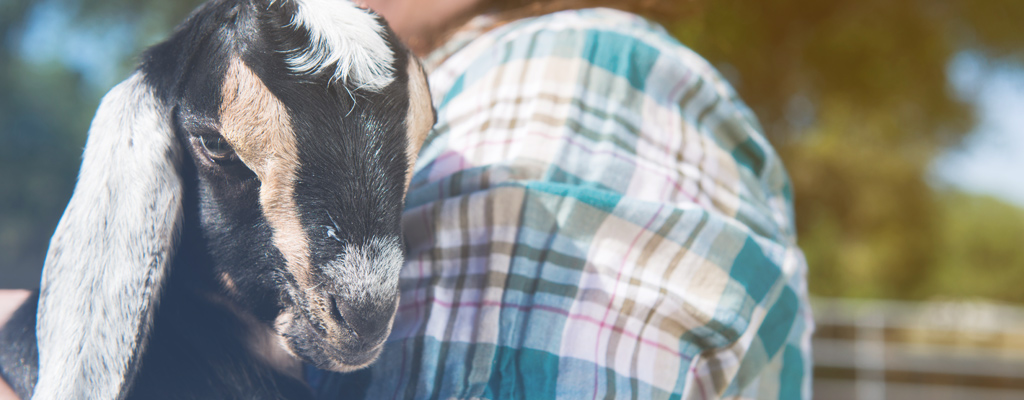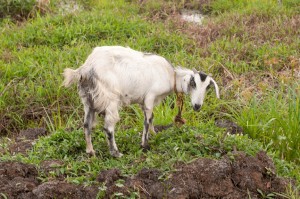


Sign-up for {N}power to get exclusive discounts, newsletters, members-only features, and more!

It is a fact that our current industrial model of agriculture is not only producing food that is not as healthy as it should be but is also destroying the environment. Recently published research examines how different dietary paradigms relate to energy use, land use, and greenhouse gas emissions. With Earth Day approaching, let’s take a minute to review the state of the current evidence and highlight some of the most important findings.
The SAD is a diet that is high in animal products from animals raised in confinement and feedlots. Vegetable and fruit consumption is relatively low, but what is consumed is grown with conventional agricultural methods that use pesticides and genetic modification. Furthermore, the grains most abundant in SAD (wheat and corn) are grown in fields once occupied by fertile grasslands. None of these agricultural practices equate to sustainability.

Compared to the SAD, a diet that does not contain animal products from animals raised on corn and soy in factory farms represents a beneficial environmental change, according to a recent study on how different diets relate to sustainability. However, this study and others like it did not account for the use of environmentally friendly animal husbandry practices.
These types of animal husbandry practices are advantageous because they utilize the fact that animals can be raised on low quality rangeland, an abundant natural resource, while the high quality croplands required to grow fruits and vegetables are much more limited in their availability. When studying sustainability, it does not make much sense to destroy forests in order to create croplands. This concept is reflected in a paper on the sustainability of local food production in New York, which showed that a diet that includes some animal products is actually better for the environment than one that is completely plant-based.
In addition, fruits and vegetables are not dense sources of calories, so replacing calories from animal products with calories from fruits and vegetables, per the USDA, would, according to one report, increase energy use by 43% and greenhouse gas emissions by 11%. In an article featured in the Huffington Post the researcher who conducted this study stated:
“You can’t lump all vegetables together and say they’re good. You can’t lump all meat together and say it’s bad.”
Thus, the conversation about agriculture, our environment, and diet is a complex one. Furthermore, plant-based diets just don’t appeal to everyone (one study found that 84% of vegetarians return to eating meat over the course of a lifetime), so what can you do if you aren’t ready to go vegan but still want an earth-friendly diet?
I have two words for you: managed pasture. This is an agricultural practice that mimics the movement of the wild herds of the past. Herd movements influenced by predators were key in shaping the healthy grasslands that dominated the Great Plains. Keeping animals on the land and rotating them through rangelands mimics this relationship and supports the health of grasslands. The animals fertilize the land and remove dead vegetation, allowing for effective photosynthesis and spring growth without overgrazing.
Grazing lands and grasslands can act as a carbon sink—that is, carbon can be removed from the atmosphere and stored in the  soil. This is achieved through many complicated but naturally occurring processes, such as root interactions with soil microbes and the secretion of carbon by plant roots into the soil itself. It’s hard to say exactly how much carbon the soil can store, but the short answer is, a lot, potentially even restoring atmospheric carbon dioxide to levels comparable to those of pre-industrial times.
soil. This is achieved through many complicated but naturally occurring processes, such as root interactions with soil microbes and the secretion of carbon by plant roots into the soil itself. It’s hard to say exactly how much carbon the soil can store, but the short answer is, a lot, potentially even restoring atmospheric carbon dioxide to levels comparable to those of pre-industrial times.
However, plowing of grasslands to create fields for growing crops does just the opposite: by exposing this carbon-rich soil to the air, carbon is released into the atmosphere. In fact, in some regions, between 40% and 60% of the soil carbon has been lost into the atmosphere. Once these grasslands are plowed to plant monoculture row crops, the topsoil is slowly (or rapidly) destroyed, releasing carbon and rendering the land useless. This is exactly what occurred in the Dust Bowl of the 1930s, when five million acres of native prairie were plowed to grow wheat.
We all have to eat, but we don’t have to eat in an environmentally damaging fashion. Numerous studies have shown that organic agricultural practices result in increased carbon storage in the soil—a good reason to buy organic when possible.The research on the carbon sequestration potential in grasslands is very promising, but we need to protect these grasslands and ensure they are a vibrant healthy ecosystem. Raising animals on grasslands in a responsible fashion sequesters carbon in the soil and at the same time turns inedible grasses into energy that can be consumed by humans as meat or dairy. But farmers and ranchers will produce food in this fashion only if there is a market for it, so vote with your dollar! Buy pasture-based dairy, grassfed meats, and organic produce!



Sign-up for {N}power to get exclusive discounts, newsletters, members-only features, and more!